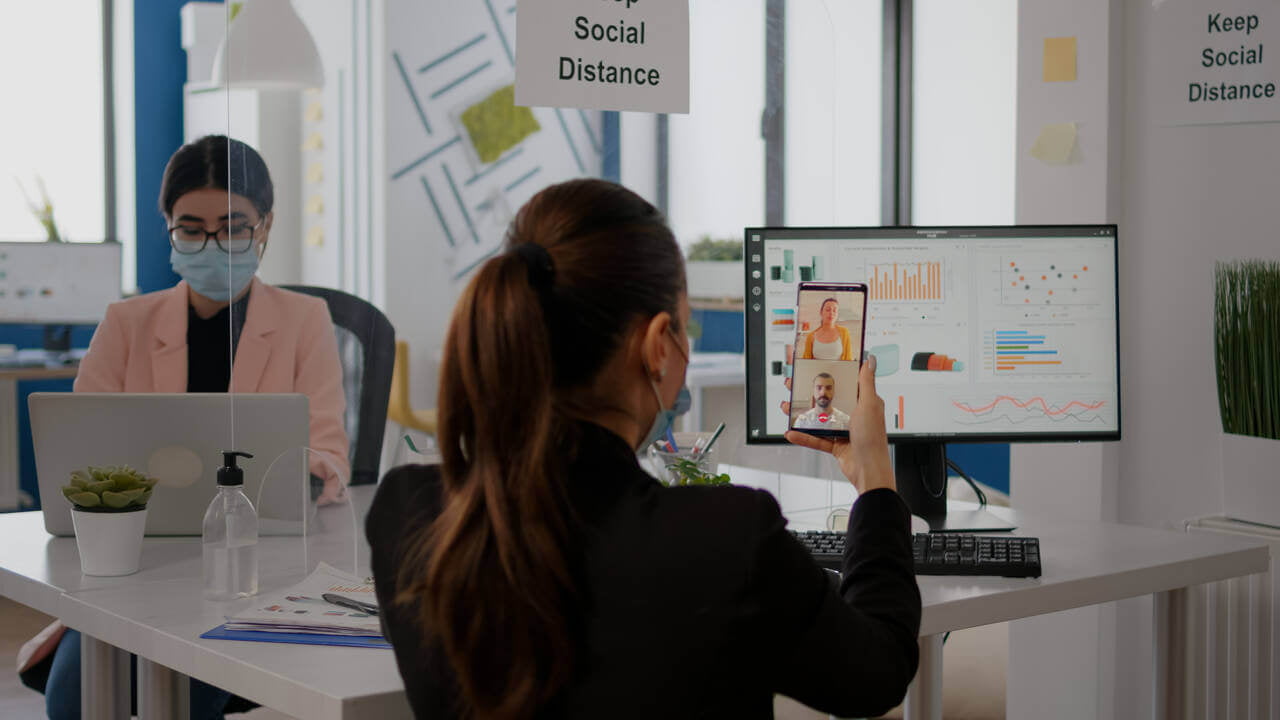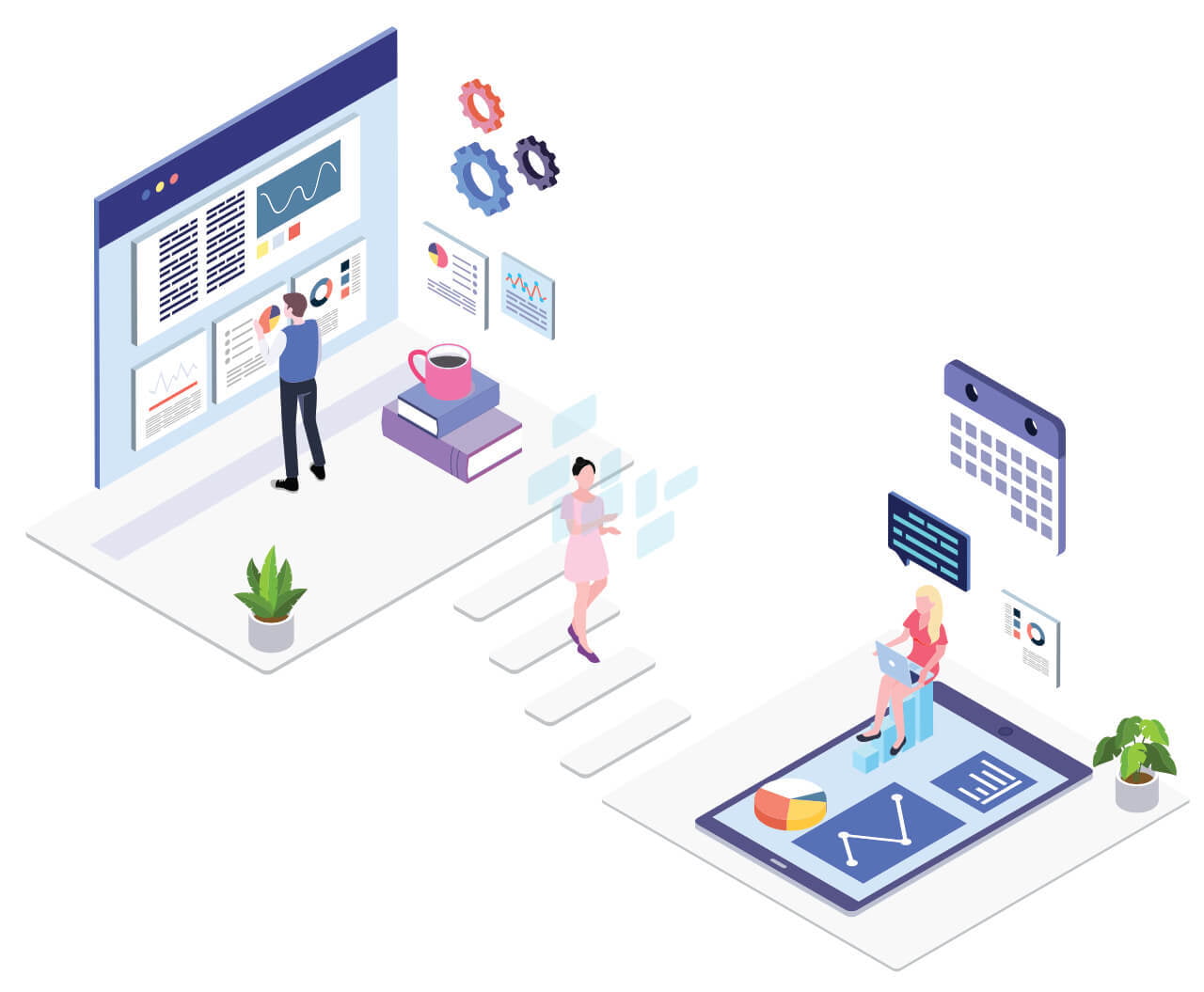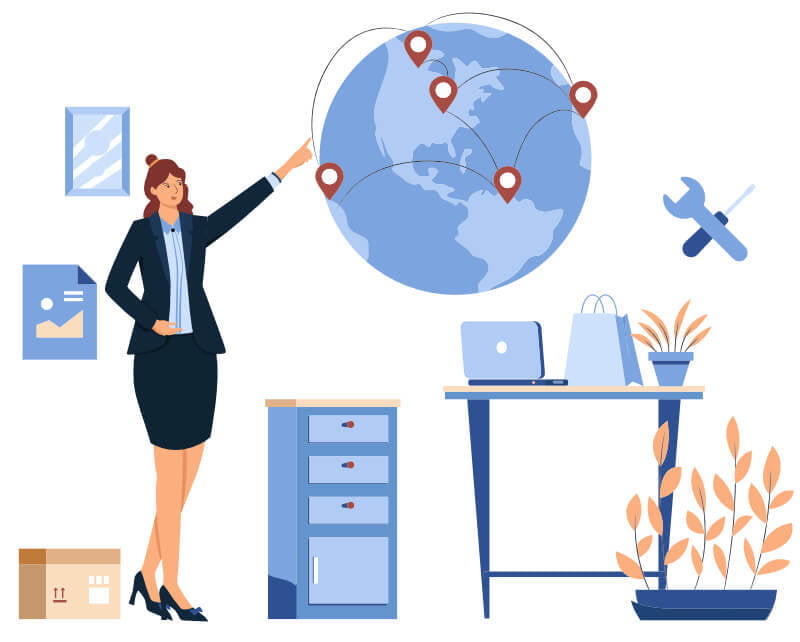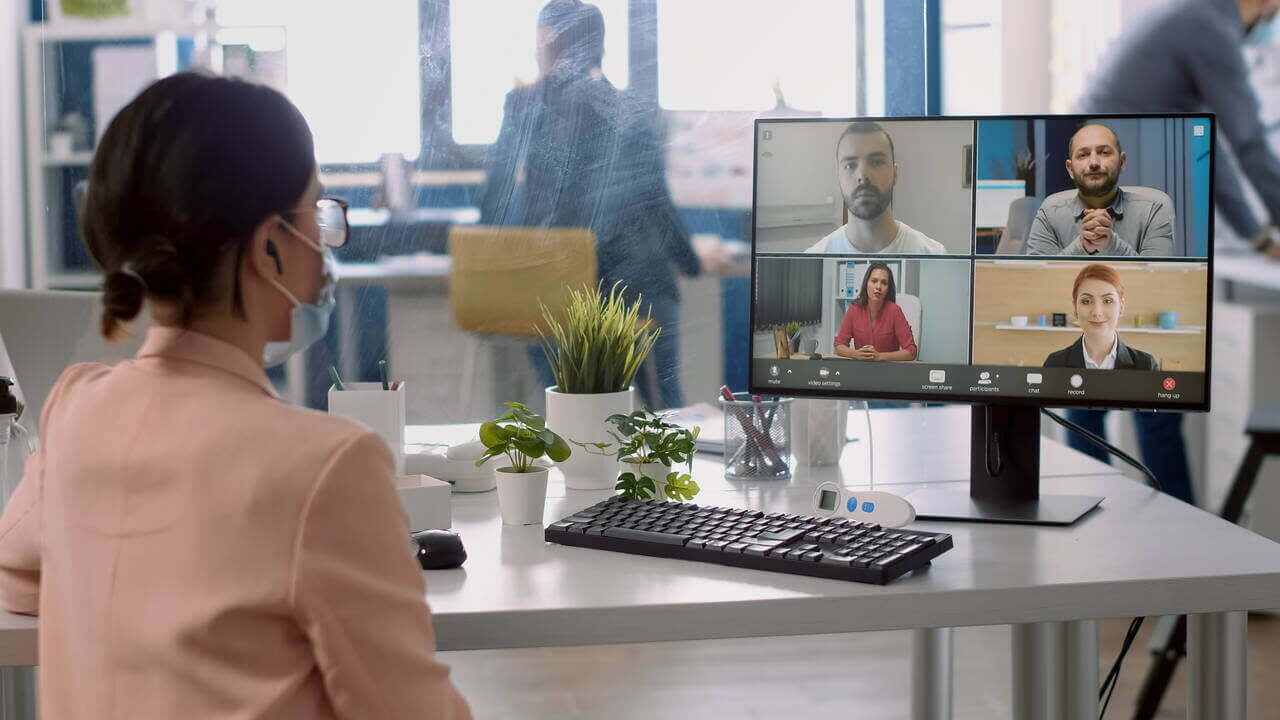
The COVID-19 Pandemic has altered most aspects of our daily lives, especially work. We have seen many companies who had to move their workforce into a digital workplace to cope with the situation. Although the idea of a digital workplace is not new, the lessons of COVID-19 can be divided into two broad categories. Firstly, the importance of creating a positive workplace culture through the use of technology in the workplace, particularly in areas such as health, education, and wellness. Secondly, the investment needed to ensure a healthy balance between the use of technology and the overall health of workers.
Most businesses have implemented these changes, but what are the real effects of COVID-19, and how much of it will remain after the pandemic is over? Would it change the global world of work forever? Let’s examine these changes and look into strategies that will work today to combat these challenges.
How the Digital Workplace Has Changed
How the Digital Workplace Has Changed
We first need to define what the digital workplace is: The "digital workplace" includes the services and technologies that employees use in their daily work. These changes include automating manual processes, introducing new cybersecurity solutions, and creating new types of data backup. These changes have been dictated by the need for companies to adopt modified digital workplace structures, tools, and technologies to meet immediate needs.
In the early stages of the pandemic, organizations had to change many aspects of their digital workplaces very quickly. COVID-19 has drastically changed the digital workplace and will continue to do so.
Operational Changes and Accelerated Digital Transformation
Operational Changes and Accelerated Digital Transformation
In adherence to social distancing with anti-analog regulations mandated by the government, this heavy digital reliance ended up being a training ground for businesses to digitize. The economic downturn has sped up this planned transition of a perceived far-future vision to an emergency call for business survival. Businesses had no choice but to test it out on the spot despite being unsure of the success of digital transformation.
Workplace Environment and Digital Platforms
Workplace Environment and Digital Platforms
The future digital workplace must cover all three aspects - digital, physical, and human - because both digital and physical workplaces cover employee-based business processes and almost every other value chain requires human interaction. The physical workplace has been driven by the need for more flexible working environments, and one-third of future work will be done with a strong digital structure that meets the needs of workers and businesses. Businesses now have to work everywhere and on every platform in the long term. The transition requires the elimination of long-standing manual processes and the increasing need to understand the human side of the digital world.
Use of Software and Tools
Use of Software and Tools
Digital transformation, combined with new tools and technologies, will allow a range of technical and human resources to work together to improve the experience, simplify work and encourage collaboration.

It will be more important to measure worker satisfaction, productivity, and professional progress with improved analytical tools. The technology will continue to evolve with tools that support all functions, especially human resources. Automation is also another obvious transition that will continue to accelerate - this has tested organizations’ capabilities of going into this transition and also has offered skyrocketing benefits during these times.
New Office Requirements
New Office Requirements
The ongoing COVID 19 pandemic has brought about a number of changes in the workplace that many thought were impossible. One of the most visible changes was the fact that offices were closed in the face of this virus. There was a shift from companies prescribing how offices are designed and managed to establish a model that recognizes the individual needs of employees. Many will no longer be able to return to a structured 8 - 5 pm shift in the office, and landlords and employers will also need to offer more flexibility to meet the needs of multi-generational workers. The new standards for office space include technology advancements and remote solutions that minimize workplace densification, increase confidence in employee’s personal work, and provide flexibility for work-life balance.

More Remote Work Opportunities
More Remote Work Opportunities
Since more than half of the respondents say they work from home after COVID-19, an increase in distance work is expected. As companies approach the annual limit of working from home, this is likely to change in the coming years. Although the concept of remote working has been successful since the COVID-19 pandemic, many employers will be able to offer this option to their employees. COVID-19 and the acceleration of the digital workplace will change the mentality of older thinkers and help break the tradition of using analog means to help businesses perform more efficiently.
Although most organizations have been trying to support flexible work for almost a year, the problem has not yet been fully solved. Companies need a foundation to enable employees to access their workplaces from anywhere and with any device. By continuing to work remotely, companies not only need to change their approach but also abolish the recognized standards from years ago.
As work expands remotely, and in some cases, becomes the new normal, many companies will ensure that their talent strategy is cost-oriented to reduce the risk for businesses. We will see more companies evaluate the opportunities for geographical relocation, allowing them to focus on finding the right skills, reduce overall costs by sourcing and hiring people in remote locations, and improve employee satisfaction by reducing workplace constraints.
Virtual Transition: Global and Culture Consideration
Virtual Transition: Global and Culture Consideration
Leadership
Leadership
Although labor productivity may be increasing, many workers are struggling with job satisfaction, and it will be crucial to listen to workers who are more focused on well-being, diversity, and inclusion. As a result, the definition of a powerful leader will change, and human resources will expand the range of services that deliver experience and results. Managers in different organizations need to further personalize their approach and provide more hands to motivate and inspire their teams and colleagues.
Employee Experience
Employee Experience
More than ever, companies need to use the right technologies and processes to transform the experience of their employees. Other aspects of employee experience are also changing, and COVID-19 is accelerating the ability to use them in a variety of ways, whether in the form of a digital office or a physical office.

The work-from-home transition has shown an increase in employee productivity and efficiency while saving businesses a significant amount of money. It has left remote working a viable option for them as companies now realize the benefits of it. Remote work showed more employee productivity, efficiency as processes and communication improved, cutting down waiting time, meeting preparations, and other bottlenecks. The evident shift in the work culture has influenced further adjustments as more and more companies are adapting to the digital era. What initially was a temporary solution to combat the current economic and pandemic challenges became a permanent change to prepare for a more resilient future.

Collaboration
Collaboration
There is also a greater focus on how businesses create sustainable, powerful, and collaborative environments. For now, current and immediate tactics and efforts will probably need to evolve to create a long-term environment that will have a high impact.
This investment has the added benefit of creating a seamless and collaborative digital working environment that will go a long way to keeping you competitive by attracting top talent.
One of the most successful companies we have seen in the last year were those that adopted the BXT (Business Experience Technology) approach. With a robust corporate strategy in place, collaboration can help you further enhance experience, design, and technology within your business.
Managing Requests: Change in Demand and Customer Interaction
Managing Requests: Change in Demand and Customer Interaction
With coronavirus shaping a new normal and new workplace culture, significant customer behavioral shifts also shape a new type of market. The pandemic has affected the whole world, establishing a permanent change in people's interests, priorities, and needs. To effectively cope with new audiences, emerging markets, and new demands, companies have to keep up with these changing trends and anticipate further behavioral shifts and possible causes and influences. Another strategy businesses should employ is to save audiences during the crisis and learn from its successes. Monitoring these changes goes hand in hand with managing new technologies that help better track and utilize data for corrective measures and improvements. Customers will likely continue to interact with businesses that are attentive to their needs. It will give the impression that they will continually meet their changing needs and demands. As the work culture has changed, companies' biggest challenge now is to establish a system in response to not just the changes internally but also externally.
Adjusting to the New Normal
Adjusting to the New Normal
A new challenge has risen, calling us to ditch the traditional ways. Globalization, global integration, and digitization are expected to rise as developing economies, technological advancements, and emerging markets continuously level with these demands. These developments will alter the face of marketing and doing business indefinitely, continually giving a new meaning to what 'normal' is. Companies will have no choice but to stay agile and adopt a new mindset to overcome upcoming challenges ahead. Mobilizing growth, digital transformation, innovative solutions, and creative strategies are a few of the key things companies have to employ to ensure long-term business success.

While the immediate and urgent effects of the pandemic have subsided, the long-term effects are still being felt. With many of the effects of COVID-19, it is worth taking a look back at the changes it has brought to the new digital workplace. The pandemic will eventually subside, but some of these changes are permanent and to varying degrees.
Coping with change is all about strategy, development and execution. Consider seeking professionals and experts at Universal Creative Solutions to ensure your strategy's success rate so that you can save time and money to face these challenges. Contact us today to know how our strategic planning opens up new market opportunities and enables you to grow your business.

